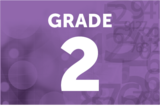
CSDE Model Curricula Quick Start Guide Equitable and Inclusive Curriculum The CSDE believes in providing a set of conditions where learners are repositioned at the center of curricula planning and design. Curricula, from a culturally responsive perspective, require intentional planning for diversity, equity, and inclusion in the development of units and implementation of lessons. It is critical to develop a learning environment that is relevant to and reflective of students’ social, cultural, and linguistic experiences to effectively connect their culturally and community-based knowledge to the class. Begin by connecting what is known about students’ cognitive and interdisciplinary diversity to the learning of the unit. Opposed to starting instructional planning with gaps in students’ knowledge, plan from an asset-based perspective by starting from students’ strengths. In doing so, curricula’s implementation will be grounded in instruction that engages, motivates, and supports the intellectual capacity of all students.Course Description: Three-Dimensional Learning shifts the focus of the science classroom to environments where students use disciplinary core ideas, crosscutting concepts with scientific practices to explore, examine, and explain how and why phenomena occur and to design solutions to problems. Three-dimensional learning helps students build their research, communication, and analytical thinking skills.More informational regarding Three-Dimensional learning can be accessed at the following address:What exactly IS three-dimensional learning? | Teaching ChannelEach year, students in Connecticut should be able to demonstrate greater capacity for connecting knowledge across, and between, the physical sciences, life sciences, earth and space sciences, and engineering design. During Grade 2, students will begin to form deeper connections between concepts previously learned in grades K–1, such as collecting evidence and drawing conclusions, understanding relationships between objects, and critical thinking that leads to designing effective solutions for problems. Upon completion of Grade 2, students should have a deeper understanding of: A basic understanding of how land changes and what are the things that cause it to change.What are the different kinds of land and bodies of water.How are materials similar and different from one another, and how do the properties of the materials relate to their use.What do plants need to grow.How many types of living things live in a place.Aligned Core Resources: Core resources is a local control decision. Ensuring alignment of resources to the standards is critical for success. Alignment of all content materials across the grades and vertically in the grade band must be communicated to all staff. Additional Course Information: NGSS has unique features. To better understand the make-up of NGSS visit the following website for a more detailed break-down of the CT Science standards from which this curriculum was based. Nextgenscience Assessment Information: There are many ways to assess student learning. Besides annual statewide summative testing, the Connecticut State Department of Education has developed NGSS Interim Assessment blocks specific to the grade 3 – 5 grade band. These can be accessed through the CSDE Website in the Performance Office tab. Many websites also offer assessment materials aligned to the NGSS, specifically through the NSTA, and Defined Learning. ELA/Math Transferable Skills Addressed in the Course: The following Practices Venn Diagram illustrates the connections and commonalities in the major content areas. This diagram attempts to cluster practices and capacities that have similar tenets and/or significant overlaps in the student expectations. Likewise, we have placed practices and capacities within the disciplinary domains if there was not a significant overlap or relationship to another discipline. One could argue certain practices/capacities could be placed in other positions within the Venn diagram. These placements are not definitive and the intention of the standards documents may not have conceptualized the three disciplinary areas In this manner.
- Subject:
- Life Science
- Physical Science
- Space Science
- Material Type:
- Full Course
- Provider:
- CT State Department of Education
- Provider Set:
- CSDE - Public
- Date Added:
- 11/09/2023

